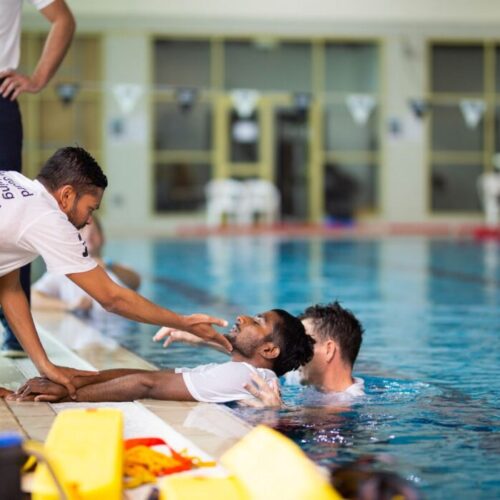Anemia in kids & teens
It is very common for teenagers, especially girls, to experience anemia, but thankfully this condition is easy to treat once you spot the symptoms and take action!

Anemia is a condition that affects both adults and children, and arises when the number of red blood cells in the body falls below the normal range for the individual. Anemia is fairly easy to spot in a child, as it can make their skin look very pale and colourless, and you’ll see them feeling tired, weak and energyless all the time. Although the symptoms can be distressing for any parent to see, anemia is very straightforward to treat, because its root cause is usually an iron deficiency in your child’s diet. Teenagers in particular go through a stage of growth spurt, and for this reason, teens are particularly susceptible to anemia, as are younger children with nutritionally inadequate diets.
WHAT IS ANEMIA?
Anemia means there are not enough red blood cells in the body. Red blood cells are filled with hemoglobin, a special pigmented protein that makes it possible to carry and deliver oxygen to other cells in the body. The cells in your child’s muscles and organs need oxygen to survive, and decreased numbers of red blood cells can place stress on their body.
Your child may become anemic if…
Their body is not producing sufficient red blood cells. This can happen if they don’t have enough iron or other nutrients in their diet (iron deficiency). Their body destroys too many red blood cells. This type of anemia usually happens when a child has an illness or has inherited a red blood cell disorder, such as sickle-cell anemia
If your child loses red blood cells through bleeding. This can either be obvious blood loss, such as heavymenstrual bleeding, or long-term low-grade blood loss, perhaps in the stools.
SIGNS & SYMPTOMS OF ANEMIA
Pale or yellowish skin. Pale cheeks and lips. The eyelids and nail beds may look more yellow-ish than normal. Irritability. Mild weakness
Feeling sleepy more frequently. Children experiencing red blood cell destruction may become jaundiced (yellowing of the skin or eyes) and have dark tea or cola-coloured urine
Children with severe anemia may have additional signs and symptoms that include:
Shortness of breath
A rapid heart rate. Swollen hands and feet
Headaches
Dizziness and fainting. Restless leg syndrome
When kids eat non-food items
Children with anemia caused by very low levels of iron in their blood may also eat unusual non-food items such as ice, clay, paper, cardboard and plastic. This consumption of non-food items is called ‘pica’ and it often occurs in children who are low in iron and can cause constipation. In such kids, the pica usually ends after the anemia is treated with the required iron intake. If your child shows any of these signs or symptoms, see your doctor, as even a low level of anemia can affect your child’s energy, focus and ability to learn. Chronic iron deficiency anemia can result in long term, permanent impairment of development in your child. That said, it rarely needs to become so serious, because in most cases, a simple blood test can diagnose anemia.
PREVENTING ANEMIA IN CHILDREN
Iron-deficiency anemia and other nutritional anemias can be prevented by ensuring that your child eats a well-balanced diet. Talk with your doctor about the specific dietary habits you have at home, as your child may require a nutritional supplementation to prevent anemia.
Preventing nutritional anemia
Cow’s milk is not suitable for babies until they are over 12 months old. Giving cow’s milk before your child’s system is ready to handle it can decrease the amount of iron absorbed in the gut, and in some cases blood loss through their stools.
If you’re breastfeeding
Your baby will have an adequate supply of iron until at least 4 months of age. At 4 months of age breastfed babies should be supplemented with iron until they are eating enough complementary foods that are rich in iron. If you have any concerns, speak to your doctor about the foods best for this and whether / how much additional iron supplementation is needed.
Formula-fed babies
If you are using formula, give your baby formula with added iron. Formula milk that is low in iron can result in iron deficiency anemia and should not be used. (Breastfeeding is always best for babies.)
After baby’s first year
After 12 months of age, avoid giving your baby more than 2 cups a day of whole cow’s milk. Milk is low in iron and can make babies feel full, which can decrease the amount of other iron-rich foods they’ll eat.
A well-balanced diet for older children
A well-balanced diet with foods that contain iron is a must for older children. Common sources of iron include green leafy vegetables such as kale, spinach and other dark green coloured leaves, red meat, egg yolks, potatoes, tomatoes, beans, and raisins. Many grains and cereals are also fortified with added iron, so check labels to make sure.
Citrus fruits help iron absorption
Although green vegetables contain lots of iron, the iron from many vegetables comes in a form that is difficult for your body to absorb, unless they also intake Vitamin C. Achieving this is as simple as a squeeze of lemon juice over salads and green leafy veg. Encourage the whole family to eat citrus fruits or eat other foods high in Vitamin C to increase the body’s absorption of iron.
FINALLY…
If your child starts to show any signs or symptoms of anemia, be sure to visit the doctor and also find out if anyone else in your family background has a history of anemia. The condition responds well to appropriate remedies and handling, and your child will soon feel the difference too!











Comments